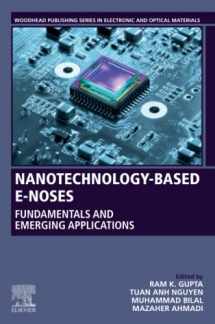
Nanotechnology-Based E-Noses: Fundamentals and Emerging Applications (Woodhead Publishing Series in Electronic and Optical Materials)
Book details
Summary
Description
Nanotechnology-based E-Noses reviews advances in nanomaterials and their modification for use in e-sensors. "E-noses" or "electronic sensors" are emerging as advanced technologies for the fast detection of chemicals, gases, and explosives. The concept behind the "e-nose" is similar to the capability of humans and dogs in detecting materials based on odors. Nanomaterials can be used for e-nose technologies but their properties must be modified to make them effective sensors. The sensing capability and performance of these materials depend on several factors, such as morphology, dopants, microadditives, design of sensors, phase, and structure of the nanomaterials.
Theoretical understanding of nanomaterials and technologies for improving sensors with better detection limits are covered. The most relevant nanomaterials, their synthesis strategies, and the relationship between properties and device performance are provided. Current state-of-the-art progress in nanotechnology device fabrication along with directions for future applications and challenges are discussed.


We would LOVE it if you could help us and other readers by reviewing the book
Book review



